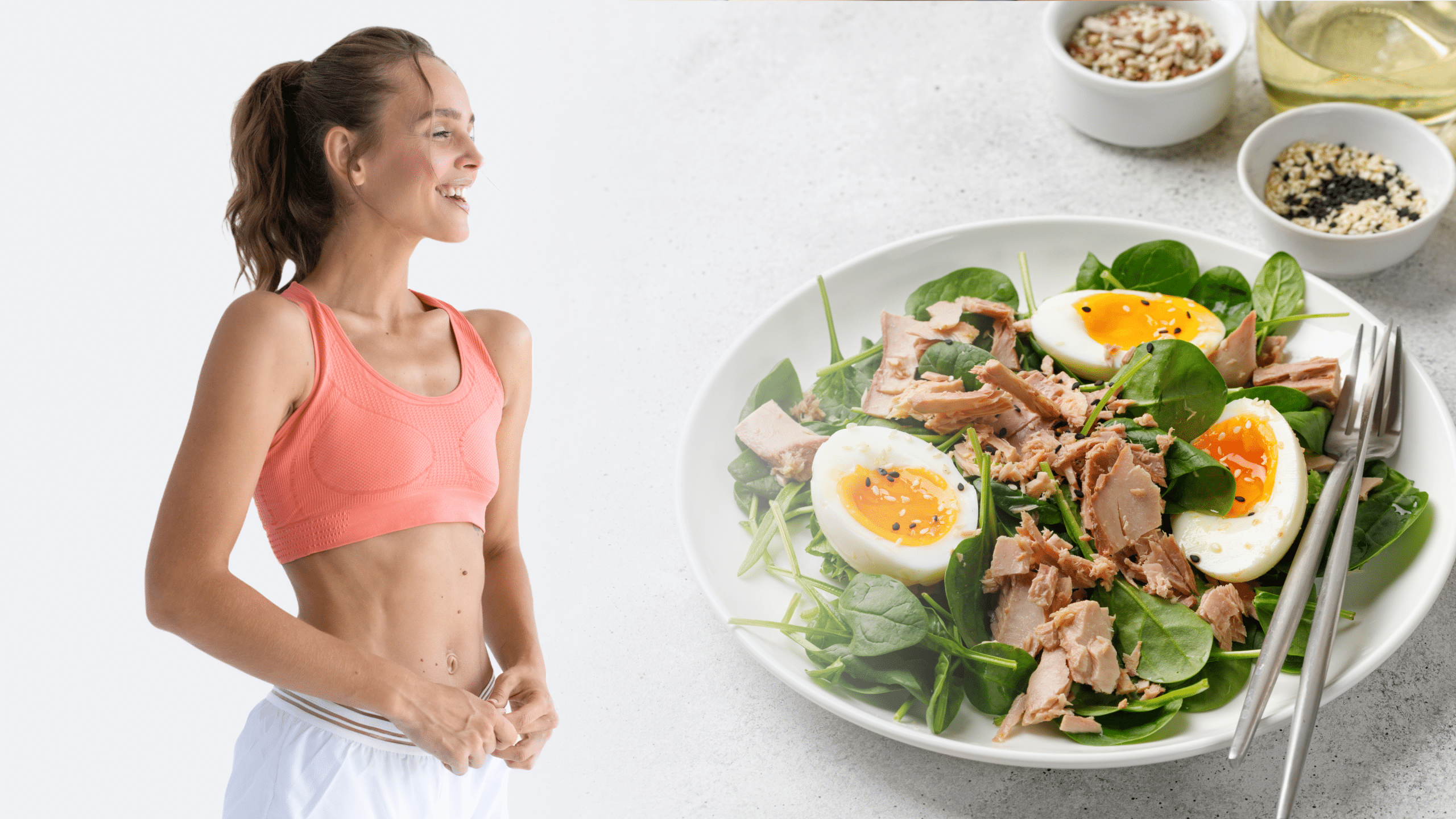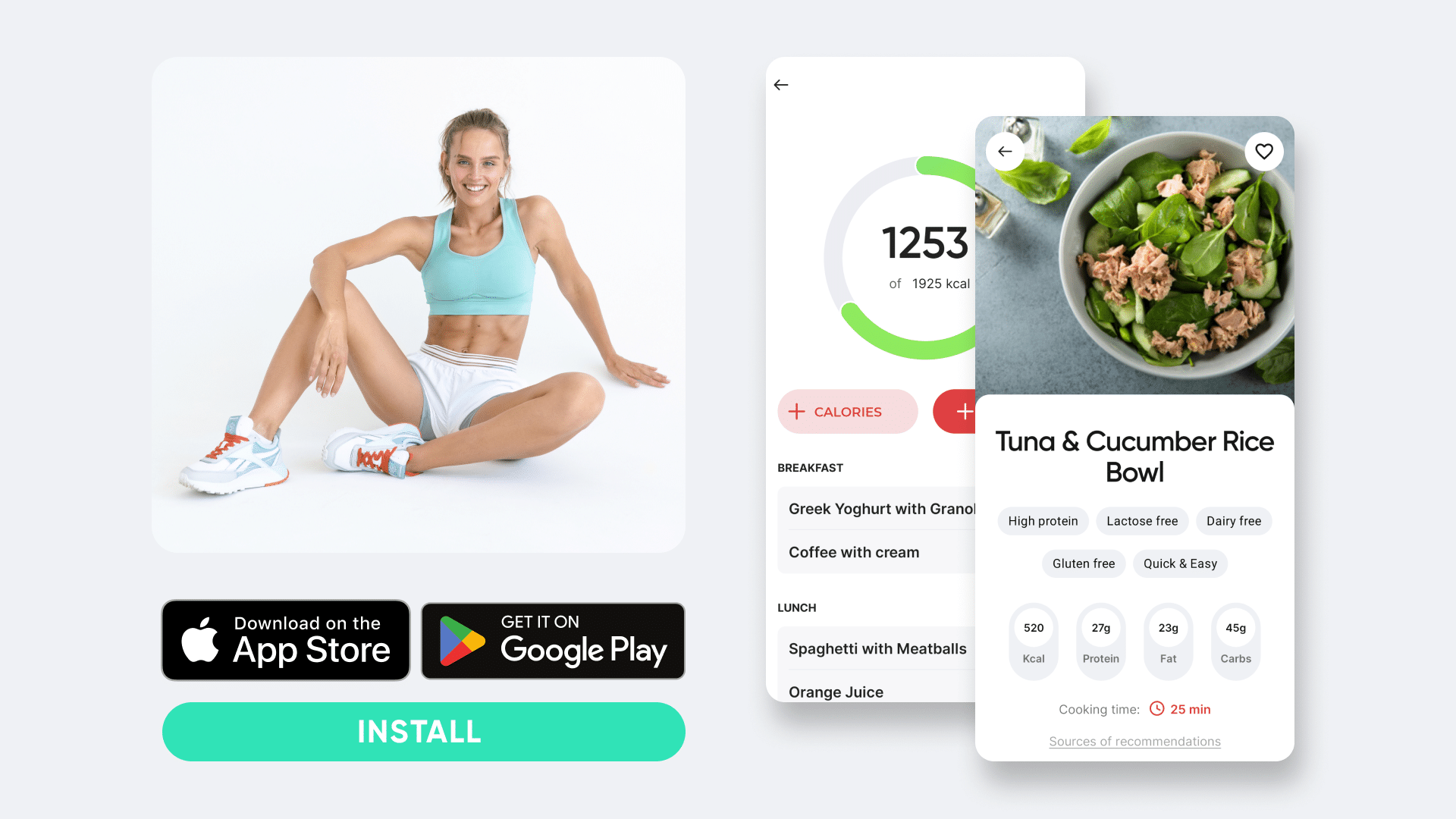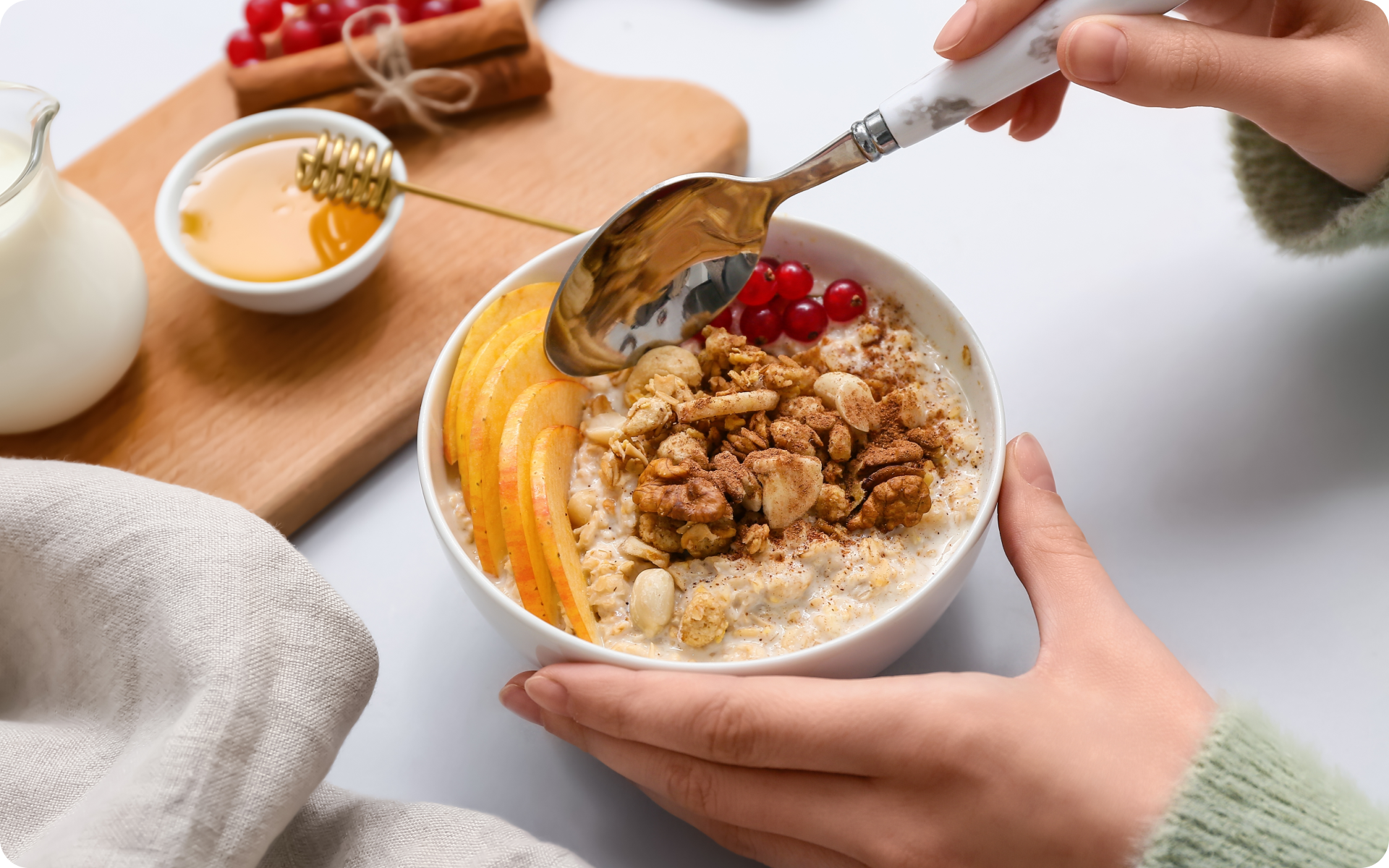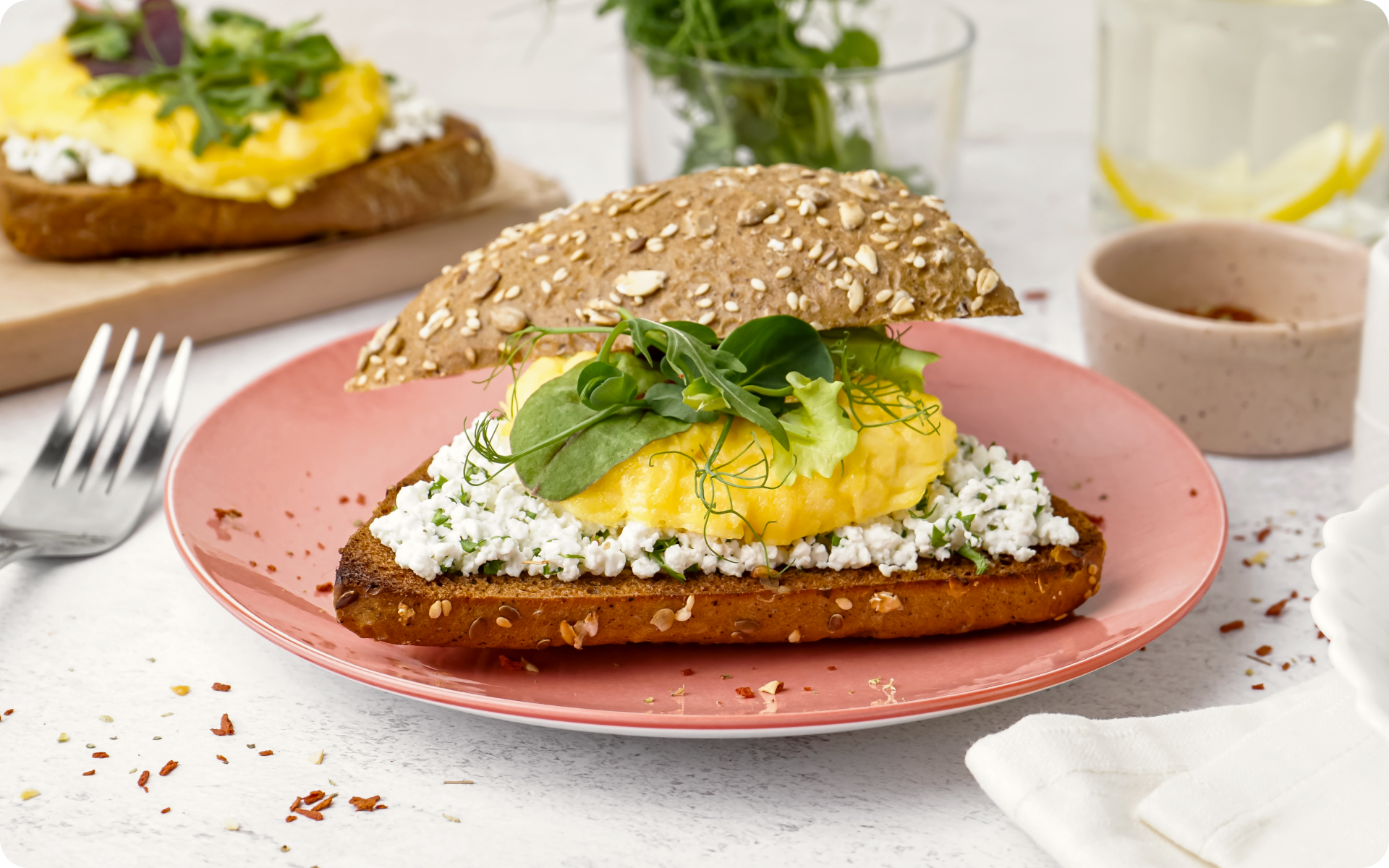Have you been considering changing your diet and lifestyle in order to lose weight? Are you confused about how to go about it, what foods to consume, and which workouts to do? If so, the 90-day diet may be the answer to your problems.
With the 90-day diet and workout plan, you’ll be able to formulate better food and lifestyle choices that will help you lose excess weight and fat and help you live a longer, healthier life.
What Is the 90-Day Diet Challenge?
The 90-day challenge diet is a dietary program that seeks to help you overhaul your eating habits by replacing them with more nutritious and healthier options for weight loss.
In this program, you’ll learn how to eat within the right calorie requirements, figure out what foods are best for weight and fat loss, which foods might derail your efforts, and generally how to make better choices for a better, healthier life.
Why a 90-Day Diet Challenge and Not Something Shorter?
Contrary to popular opinion, it doesn’t take 21 days to form a habit. Forming a new habit can take anything from 18 to 254 days.
In one study that was published in the British Journal of General Practice, researchers speculated that this myth came from the anecdotal evidence of plastic surgery patients who required 21 days to adjust psychologically to their new appearance.
The researchers also stated that it takes an average of 66 days for a new behavior to become automatic (12).
In light of this, it is safe to say that taking on the 90-day diet challenge is a good way to give yourself time to form healthy eating and workout habits that will stick. 90 days also allows you to find your footing, meaning that you’ll have enough time to fail and fall off your diet but still pick yourself up and get back on track. You also get enough time to try out all the foods you’d like, which will enable you to make a menu or meal plan that you’ll love and enjoy.
Yanking yourself back in shape has never been so easy with our game-changing fitness app! Start transforming your life with BetterMe!
How to Do the 90-Day Diet the Right Way
Starting a new diet can be hard. Worrying about what to eat, how to eat it, when and how often to exercise, and how many times a day to eat can be both distracting and daunting.
Here are some tips on how to do the 90-day diet the right way, without fear of falling off your eating plan and back into old and destructive habits:
Don’t focus on the scale
When looking into doing a diet challenge for whatever amount of time, many of us get caught up in the hope of weight loss. While this is a potential benefit of the 90-day diet, it’s not the only one. Getting caught up on the number on the scale is not the best mindset to have when getting into this challenge.
Remember that eating right has more potential benefits, including but not limited to (2):
- Reducing the risk of some cancers
- Preventing cardiovascular diseases
- Promoting bone and teeth strength
- Boosting your mood
- Improving gut health
- Improving your sleep
- Preventing and even helping manage diabetes
Research has also shown that focusing too much on the scale can contribute to self-esteem issues, eating disorders, and even depressive symptoms (15). It can be good to check your weight occasionally – after all, it lets you know if your regimen is working – but it can be a slippery slope too, so practice caution.
Manage your expectations
Yes, weight loss is one of the many benefits of the 90-day diet meal plan. However, this doesn’t mean you’ll lose 10 pounds in the first 30 days or even 30 pounds in 2 months. Going into the 90-day challenge diet with the wrong mindset can ruin your progress.
According to the Centers for Disease Control and Prevention, healthy and sustainable weight loss is a gradual process that means losing approximately 1 to 2 pounds a week (11). While this number may seem small at first, remember that it adds up.
At the end of the 90 days, you may find that you’ve managed to lose anything from 12 to 24 pounds (depending on your weekly weight loss rate).
Count your calories
If you’re wondering how to lose weight on a 90-day diet, the answer lies in your caloric intake. You may not want to hear this, but calories matter, even the healthy calories from healthy foods.
Eating at a caloric surplus, even if this comes from healthy meals, can add up and make you gain weight instead of losing it. To lose weight on this challenge, you need a caloric deficit.
According to the Mayo Clinic and Harvard Health Publishing, in order to lose 1 to 2 pounds a week, you should cut anything from 500 to 1,000 calories from your daily food intake. This means a 3,500 to 7,000 calorie deficit every week. Because 3,500 calories equals approximately 1 pound of fat, this calorie deficit could help you lose 1 to 2 pounds a week (7, 3). However, it may not work exactly like this for everyone – weight loss is complicated and affected by many individual factors.
Remember that eating too little or rather cutting your calories too much will likely stall your metabolism, possibly resulting in weight gain rather than weight loss.
The recommended caloric intake varies from person to person and is dependent on factors such as height, weight, gender, age, and level of daily physical activity (1).
Read more: 7-Day Weight Loss Low-Carb Diet: Choose High-Protein, High-Fiber, or Ultra-Low-Carb
Choose the right foods and snacks
Making poor food decisions is one of the quickest and easiest ways for you to slip and fall off your healthy 90-day weight loss diet plan. A good diet for weight loss and a healthy life is one that includes all major food groups:
- Fruit and vegetables
- Whole grains and legumes
- Dairy
- Lean protein
- Healthy fat
Remember that cutting out food groups from your diet could lead to malnutrition or nutrient deficiencies. Lack of enough nutrients in the body can lead to a lack of energy and also conditions such as (13):
- Anemia
- Reproductive health problems
- Short-term memory loss
- Muscle weakness
- Mood disorders
- Skin issues
- Weak bones and teeth
- Eye problems
Make a meal plan
How many times have you worked late to the point where you were too tired to cook and had to make a stop at your favorite fast food joint for a quick takeaway meal?
Have you had those days where you couldn’t be bothered to cook so you just ordered something from an app or a food delivery service because there wasn’t anything to eat in the house or fridge?
Now, how often during either of the above instances did you order healthy and nutritious meals?
If you’ve ever been in either of the above-mentioned instances, then you can understand how a 90-day diet meal plan can be a lifesaver. Not only do you get to save some money, you’ll also make meals and snacks that will ensure that you always have handy, healthy, and nutritious foods in favor of high-calorie delivery options.
The Best Foods for Your 90-day Diet Meal Plan
Not all foods are made the same and not all of them will be beneficial or healthy for your 90-day diet. Listed below are some foods you should include in your grocery list as you plan for this 90-day healthy meals challenge:
- Whole eggs. Unless you’re on a vegan diet, eggs are a great option for your 90-day diet meals. They’re high in protein and low in calories. Don’t avoid the yolks – they contain protein and other important nutrients and won’t affect your blood cholesterol levels if eaten in moderation.
- Leafy greens. They’re low in calories and carbohydrates while being loaded with fiber, which means that you can eat a huge amount of these foods without significantly increasing your calorie intake for the day.
Leafy greens include collard greens, kale, bok choy, spinach, romaine lettuce, Swiss chard, and cabbage.
- Oily/Fatty fish. They’re packed with omega-3 fatty acids and are full of proteins while being relatively low in calories. Popular examples include salmon, tuna, sardines, mackerel, and trout.
- Lean cuts of meat and poultry. Skinless poultry, particularly the light meat, is generally lower in calories than other kinds of meat and this is a great option for your 90-day diet plan for weight loss.
Make sure to add chicken, turkey, and duck to your grocery list. For other kinds of meat, ask for leaner cuts to help reduce your saturated fat intake. Protein is a great macronutrient for weight loss.
Research has shown that it increases satiety and boosts your metabolism during digestion, which increases calorie burning – two factors that boost weight and fat loss (17, 6). If you can, focus on having more high-protein meals in your meal plan (9).
- Complex carbs. Complex carbs include foods such as:
- Whole grains such as brown rice, wild rice, oatmeal, barley, bulgur, quinoa, whole wheat, and buckwheat.
- Starchy vegetables such as sweet potatoes, carrots, corn, beets, plantains, butternut squash, and yams.
- Legumes such as chickpeas, mung beans, green peas, kidney beans, and lentils.
Complex carbs are better for you as they’re higher in nutritional value, particularly fiber that when consumed, takes longer to digest, which keeps you fuller for longer and prevents unnecessary snacking.
- Nuts, seeds, and fruit. Nuts and seeds make great snack options as they’re full of protein, healthy fats, fiber, vitamins, and minerals. At the same time, fruits are an excellent source of essential vitamins and minerals, they’re high in fiber, and provide a wide range of health-boosting antioxidants, including flavonoids.
- Dairy. This is essential for bone health as it provides you with nutrients such as calcium, potassium, vitamin D, and protein. For your 90-day diet meal plan, you should choose low-fat options such as Greek yogurt and low-fat milk and yogurts.
You could also go for plant-based milk that has been fortified with protein, vitamins, and minerals – these are perfect for anyone who is on a plant-based diet and those who are lactose intolerant.
If you wish to cinch your waist, tone up your bat wings, blast away the muffin top – our fitness app was created to cater to all your needs! BetterMe won’t give excess weight a chance!
What Is the Best Weight Loss Plan for A 90-Day Diet?
The best weight loss plan for this challenge includes healthy meal planning and exercise. Combining a 90-day diet and workout plan ensures that you build healthier habits for the future and may help you see faster results.
When building a workout plan, make sure to incorporate both cardio and strength-training exercises.
Cardio will help burn calories and maximize fat oxidation, but it also has other health benefits such as lowering blood pressure, improving cardiovascular health, regulating blood sugar, strengthening your immune system, and better sleep (5).
Examples of cardio exercises include walking, running, hiking, and swimming.
Strength training is important for weight loss as it helps build muscle mass. Compared to a pound of fat, a pound of muscle occupies less space in the body, but it burns six to seven more calories a day.
Weight lifting also increases your excess post-exercise oxygen consumption (EPOC) for hours after your workout ends. Increased consumption of oxygen means your metabolism is high, which further translates into burning more calories (8, 14).
Your 90-day diet and workout plan should include cardio and some body-weight (or weighted) exercises such as squats, push-ups, lunges, and mountain climbers.
Sample of a 90-Day Diet Meal Plan
If you’re unsure where to start, this sample is a good starting point to help you figure out what works for you. Please note, if the total daily calorie intake is too low for you, adjust the servings or add an extra snack or two to suit your needs.
Day One
Meal 1 – Scrambled eggs with spinach and fruit
1 tsp canola oil, 1.5 cups baby spinach, 2 large eggs, salt and pepper to taste, 1 slice whole-grain bread, half cup fresh raspberries
Calories: 296. Fats: 15.7 g, Proteins: 17.8 g. Carbs: 20.9 g
Meal 2 – Chicken burgers
2 tsp olive oil, ½ kg extra-lean ground chicken, ½ bread crumbs, ½ small onion, 1 egg, 2 garlic cloves, salt and ground black pepper to taste
Calories: 238. Fats: 7.8 g, Proteins: 28.8 g. Carbs: 11.5 g
Meal 3 – Tofu stir fry
For the tofu – 398 g firm tofu, 1 egg, 2 minced garlic cloves, ½ inch fresh ginger, 2 green onion stalks, 3 tsp coconut oil, salt to taste
For the sauce – ¼ cup soy sauce, 1 tbsp rice vinegar, 1 tbsp sesame oil, 1 tbsp cornstarch, 2 – 3 tbsp water
Please note that these ingredients make 6 servings.
Calories for one serving: 315. Fats: 21 g, Proteins: 10 g. Carbs: 22 g
Meal 4 – Vegan ‘tuna’ wraps
425 g chickpeas, 1 celery stalk, 2 tsp chopped red onion, 1 tbsp capers, 2 tbsp tahini, 3 tbsp honey mustard, 4 leaves Romaine lettuce
Calories: 347. Fats: 13 g, Proteins: 13 g. Carbs: 28 g
Total intake for the day: Calories: 1,196. Fats: 57.5 g, Proteins: 69.6 g. Carbs: 82.4 g
Day Two
Meal 1 – Smoothie bowl
½ cup blackberries, ½ cup blueberries, 1 medium banana, ¼ cup sliced almonds, 1 cup almond milk, ½ tbsp spirulina, 1 whole kiwi fruit
Calories: 361. Fats: 15 g, Proteins: 9 g. Carbs: 53 g
Meal 2 – Noodle bowl
56 g dry rice noodles, 170 g tofu, patted dry, 1 cup thinly sliced cucumber, 1 cup thinly sliced cabbage, ½ thinly sliced red bell pepper, ¼ cup torn mint leaves, ½ jalapeno pepper, lime wedges
For the pickled vegetables – ⅓ cup rice wine vinegar, ⅓ cup water, 1 cup grated carrots, ½ cup sliced radishes, 1 tsp sugar, ¼ teaspoon salt
For the dressing – 4 tbsp vegan mayo, 1 tbsp water, 1 tbsp rice wine vinegar, 1 tbsp sriracha sauce, 1 tsp sugar, ¼ tsp salt, 1 tsp soy sauce
This recipe makes 2 servings.
Calories for one serving: 403. Fats: 21.1 g, Proteins: 11.2 g. Carbs: 45.5 g
Meal 3 – Tomato chopped salad
½ loaf sourdough bread, 2 garlic cloves, 6 anchovy filets, 3 cups basil, ½ cup olive oil, 2 tbsp sherry vinegar, 1 kg tomatoes, 4 tbsp unsalted butter, salt and pepper to taste
These ingredients make 6 servings.
Calories for one serving: 485. Fats: 30 g, Proteins: 10 g. Carbs: 43 g
Total intake for the day: Calories: 1249. Fats: 66.1 g, Proteins: 30.2 g. Carbs: 141.5 g
Read more: 24 Weight Loss Smoothies, 2 Diet Plans, and 5 Belly Fat Smoothie Secrets
Day Three
Meal 1 – Frittata
2 tsp olive oil, ¾ cup packed baby spinach, 2 green onions, 4 large egg whites, 6 large whole eggs, 37 g crumbled feta cheese, 2 tsp salt-free Greek seasoning, ¼ tsp salt
This recipe makes 4 servings
Calories for one serving: 178. Fats: 12 g, Proteins: 15.7 g. Carbs: 2.2 g
Meal 2 – Green kale-sauce spaghetti
75 g dried spaghetti, 2 garlic cloves, 100 g kale, 15 g Parmesan cheese, 15 g ricotta cheese
Calories: 456. Fats: 17.3 g, Proteins: 18.4 g. Carbs: 60.5 g
Meal 3 – Sesame chicken
15 g fine rice noodles, 120 g skinless chicken breasts, groundnut oil, 2 spring onions, 75 g Chinese cabbage, 100 g sugar snap peas, ½ fresh red chili, 1 lime, 1/2 tbsp low-sodium soy sauce, ½ tbsp peanut butter, 2 tbsp natural yogurt, 1 cm piece of ginger, 1 tbsp sesame seeds
Calories: 296. Fats: 16.6 g, Proteins: 16.1 g. Carbs: 17.7 g
Meal 4 – ½ cup coconut yogurt
Calories: 100. Fats: 5.5 g, Proteins: 6 g. Carbs: 5.5 g
Total intake for the day: Calories: 1223. Fats: 47.7 g, Proteins: 79.4 g. Carbs: 119.7 g
Day Four
Meal 1 – Salmon and avocado toast
1 avocado, 2 tbsp fat-free yogurt, juice of half a lemon, 2 slices rye bread, 75 g smoked salmon, ¼ cucumber, a pinch of cayenne pepper, a handful of salad cress
Dress your toast with some red chili, mint leaves, zest of half a lemon, 1 tomato, 1 tsp red wine vinegar.
Calories: 296. Fats: 16.6 g, Proteins: 16.1 g. Carbs: 17.7 g
Meal 2 – Loaded chicken fajitas
1 tbsp red wine vinegar, 1 tbsp Tabasco sauce, 1 tsp dried oregano, 2 tsp sweet smoked paprika, 2 garlic cloves, 1 large red onion, 400 g skinless chicken breasts, 3 mixed-color peppers, 1 large aubergine, 2 limes 30 g fresh coriander, 1 ripe avocado, 4 wholemeal tortillas, 50 g feta cheese
This makes 4 servings.
Calories for one serving: 448. Fats: 16.4 g, Proteins: 34.1 g. Carbs: 39.4 g
Meal 3 – Turkey pot pie
For the crust – 1 ¼ cups almond flour, ¾ cup tapioca flour, ½ tsp salt, ½ tsp garlic powder, 2 tbsp ground flax meal, 6 tbsp warm water, 5 tbsp ghee, 1 tbsp cold water
For the turkey filling – 340 g cooked turkey, 1 tbsp ghee, 1 small onion, 3 minced garlic, 226 g button mushrooms, 2 small red potatoes, 3 cups chicken broth, 1 cup frozen peas and carrots, 3 tbsp tapioca flour, ¾ tsp dried thyme, ½ tsp dried sage, ½ tsp salt, ¼ tsp. black pepper
This makes 6 servings.
Calories for one serving: 477. Fats: 27 g, Proteins: 26 g. Carbs: 37 g
Total intake for the day: Calories: 1236. Fats: 60 g, Proteins: 76.2 g. Carbs: 97.7 g
Day Five
Meal 1 – Protein pancakes
¼ cup egg whites, 1 scoop vanilla protein powder, ¼ cup mashed butternut squash, 1 tsp ground flaxseed, ¼ tsp pumpkin pie spice, pinch of ground cinnamon, 3 drops of stevia. Top with peanut butter (optional)
Calories: 236. Fats: 3 g, Proteins: 22 g. Carbs: 32 g
Meal 2 – Pea risotto
113 g Parmesan cheese, 1 cup frozen peas, 4 tbsp unsalted butter, 1 medium onion, 1 cup short grain rice, ½ cup dry white wine, 1 lemon, 1 cup pea shoots, 1 tbsp olive oil
This makes 6 servings.
Calories for one serving: 520. Fats: 23 g, Proteins: 18 g. Carbs: 62 g
Meal 3 – Lentil wrap
For the lentils – 1 cup dry lentils, 1 tsp cumin, 1 tsp coriander, 1 tsp olive oil, salt to taste.
Tahini sauce – 2 tbsp tahini paste, 3 tsp warm water, 1 tbsp olive oil, 2 tbsp fresh lemon juice, 2 garlic cloves, ½ tsp kosher salt, cracked pepper, 1 tbsp sriracha sauce
Vegetables – 1 ½ cups shredded cabbage, 1 ½ cups shredded carrots, 3 cups chopped cilantro and scallions, 2 tbsp toasted pumpkin seeds, 1 avocado, 4 tortillas
This makes 4 servings.
Calories for one serving: 381. Fats: 13.9 g, Proteins: 18.4 g. Carbs: 43.5 g
Total intake for the day: Calories: 1137. Fats: 39.9 g, Proteins: 58.4 g. Carbs: 137.5 g
FAQs
How much weight can you lose in 90 days?
As our bodies are different and we all lose weight at different paces, it’s difficult to say how much weight you can lose in 90 days/3 months.
However, the CDC states that you can expect to lose 1 to 2 pounds a week through healthy weight loss methods (11). Using this as the baseline, you can lose anything between 12 and 24 pounds in 90 days (12 weeks) (16).
Remember to eat a healthy balanced diet, sleep more, drink more water, and work out – this is the only way to achieve your goal
Can I lose 20 kg in 3 months?
Probably not. As demonstrated above, healthy weight loss means losing 1 to 2 pounds (½ kg to 1 kg) a week. By multiplying this number by 12 weeks, it can be seen that you can expect to lose anything from 6 to 12 kgs in 3 months.
Is 90 days enough to get abs?
This is entirely dependent on how much body fat – particularly belly fat – you currently have. If you have significantly less belly and body fat, then getting abs in 90 days will be a cakewalk. However, if you have a bigger belly, then 90 days will be too little.
According to Medicine Net, depending on your current body weight, genetics, and approach to nutrition and exercise, it may take 6 months to 1 year or even up to 2 years to get abs (10).
Can I transform my body in 90 days?
Yes, you can. Changes from a healthy calorie-deficit diet and consistent exercise start to be noticeable as early as 30 days into a consistent diet and workout routine. So, by 90 days, transformative changes are likely to be visible.
You may or may not be fully where you want to be, but you’ll have made significant progress. Start today and see how proud you will be in 3 months.
Can you lose 3 pounds A week?
It is unlikely that you’ll lose 3 pounds of fat a week. As mentioned above, a safe and sustainable pace of weight loss is 1 to 2 pounds per week. Any extra weight lost is most likely due to water weight loss or muscle loss and will likely be regained quickly.
The Bottom Line
A 90-day diet plan is a good way to train yourself how to eat better for weight loss and improved general health.
Combined with consistent exercise, a calorie deficit 90-day diet and workout plan may ultimately help you lose the extra pounds, improve your immunity and physical and mental health, and boost your self-esteem and confidence.
It should be noted that if you choose to start this plan, you should consult your doctor first, particularly if you have any underlying health issues.
DISCLAIMER:
This article is intended for general informational purposes only and does not serve to address individual circumstances. It is not a substitute for professional advice or help and should not be relied on for making any kind of decision-making. Any action taken as a direct or indirect result of the information in this article is entirely at your own risk and is your sole responsibility.
BetterMe, its content staff, and its medical advisors accept no responsibility for inaccuracies, errors, misstatements, inconsistencies, or omissions and specifically disclaim any liability, loss or risk, personal, professional or otherwise, which may be incurred as a consequence, directly or indirectly, of the use and/or application of any content.
You should always seek the advice of your physician or other qualified health provider with any questions you may have regarding a medical condition or your specific situation. Never disregard professional medical advice or delay seeking it because of BetterMe content. If you suspect or think you may have a medical emergency, call your doctor.
SOURCES:
- Appendix 2. Estimated Calorie Needs per Day, by Age, Sex, and Physical Activity Level (n.d., health.gov)
- Benefits of Healthy Eating (2021, cdc.gov)
- Calorie counting made easy (2020, health.harvard.edu)
- Calories (2022, ncbi.nlm.nih.gov)
- Cardiovascular Effects and Benefits of Exercise (2018, ncbi.nlm.nih.gov)
- Clinical Evidence and Mechanisms of High-Protein Diet-Induced Weight Loss (2020, ncbi.nlm.nih.gov)
- Counting calories: Get back to weight-loss basics (2023, mayoclinic.org)
- Effect of exercise training on weight loss, body composition changes, and weight maintenance in adults with overweight or obesity: An overview of 12 systematic reviews and 149 studies (2021, ncbi.nlm.nih.gov)
- High-Protein Meal Plan to Help Lose Weight (2023, eatingwell.com)
- How Long Does It Take to Get 6-Pack Abs? (n.d., medicinenet.com)
- Losing Weight (2023, cdc.gov)
- Making health habitual: the psychology of ‘habit-formation’ and general practice (2012, ncbi.nlm.nih.gov)
- Malnutrition: causes and consequences (2010, ncbi.nlm.nih.gov)
- Resistance training effectiveness on body composition and body weight outcomes in individuals with overweight and obesity across the lifespan: A systematic review and meta-analysis (2022, onlinelibrary.wiley.com)
- Self-Weighing: Helpful or Harmful for Psychological Well-Being? A Review of the Literature (2016, ncbi.nlm.nih.gov)
- The 90-Day Diet That Drastically Improved My Sleep, Energy & Anxiety (2020, mindbodygreen.com)
- The role of protein in weight loss and maintenance (2015, pubmed.ncbi.nlm.nih.gov)














